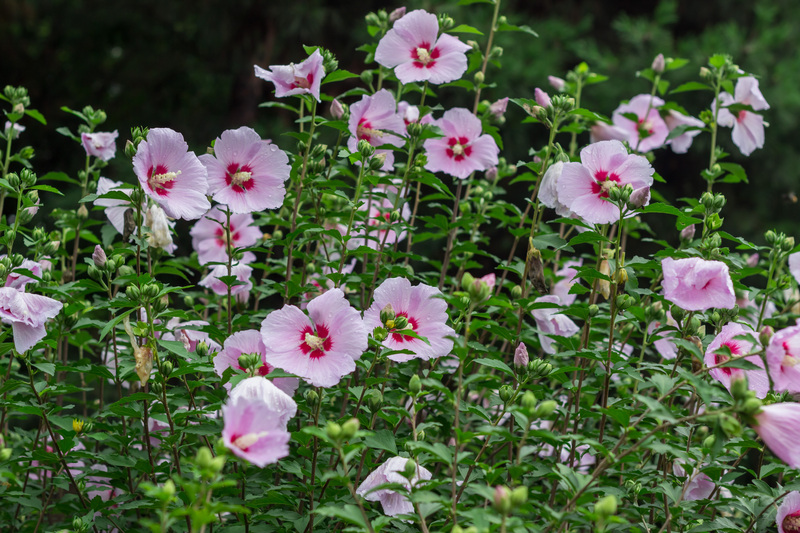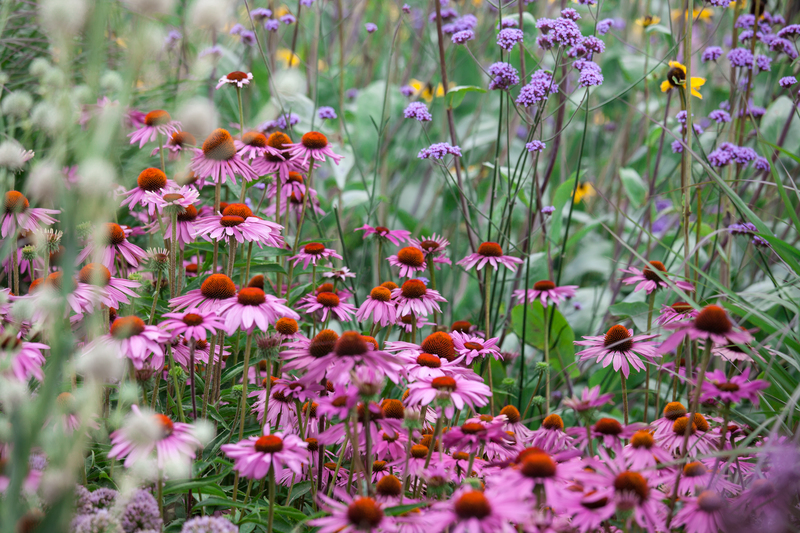Gardener's Guide to a Standout Lawn: Essential Tools and Secrets
A vibrant, flawless lawn is often the crowning jewel of any garden. For gardening enthusiasts and homeowners alike, knowing exactly how to cultivate and maintain a standout lawn can seem daunting. With so much conflicting information out there, countless products, and an endless list of supposed secrets, which actually matter? In this comprehensive gardener's guide to a standout lawn, we'll reveal the essential tools, expert secrets, and seasonal tips you truly need to boost curb appeal and achieve turf envy.
Why a Standout Lawn Matters
Your front or backyard lawn is more than just grass -- it's the first impression your home gives. A lush, green lawn speaks volumes about the care you put into your home, increases property value, and provides a safe, enjoyable space for family fun. Achieving that postcard-perfect turf isn't only about watering and mowing; it's about smart strategies, ongoing attention, and having the right tools at your disposal.

Essential Tools Every Gardener Needs for Lawn Success
To begin, no gardener can work magic without reliable, effective tools. Below is a breakdown of the indispensable items every aspiring lawn perfectionist should own.
1. High-Quality Lawn Mower
- Rotary Mowers: Great for most lawns, these offer versatility and ease of use.
- Reel Mowers: Preferable for fine, manicured lawns, they're eco-friendly and provide a cleaner cut.
- Electric or Gasoline: Choose the power source best suited for your yard size and terrain.
Tip: Always keep mower blades sharp to avoid tearing grass, which leads to disease and unsightly brown edges.
2. String Trimmer/Edger
Create clean boundaries between flowerbeds, walkways, and your lawn. String trimmers and edgers help you maintain a sharp, defined edge, making your lawn look professionally cared for.
3. Leaf Rake and Lawn Rake
- Leaf Rake: Removes loose debris and leaves without damaging the grass.
- Lawn Rake (Scarifier): Used to dethatch -- removing old thatch and moss to promote new grass growth.
4. Garden Fork or Aerator
Aeration is vital for soil and root health. By creating small holes, you allow nutrients, water, and oxygen to reach grass roots, preventing compaction and boosting resilience.
5. Spreader
For even and efficient distribution of grass seed, fertilizer, or lime, a broadcast or drop spreader is essential. This prevents patchiness and ensures each part of your lawn receives consistent care.
6. Watering Equipment
- Hose with Adjustable Nozzle: Flexible for spot watering trouble areas.
- Sprinkler System: For larger lawns, programmable systems ensure efficient coverage.
- Rain Gauge: Helps avoid overwatering by tracking rainfall.
7. Soil Testing Kit
Understanding your soil is a secret weapon for a remarkable lawn. Test for pH and nutrient deficiencies so you can adjust fertilization plans as needed.
8. Lawn Roller (Optional)
Perfect for flattening uneven areas or bedding in newly sown seed. Use sparingly to avoid soil compaction.
The Gardener's Secret Recipe: Standout Lawn Care Techniques
Now that you have your essential lawn tools, let's reveal the advanced methods that separate ordinary yards from unforgettably lush lawns.
1. Mow Like a Pro
- Grass Height: Never cut more than one-third off the blade. Taller grass shades soil, suppresses weeds, and fosters deeper roots.
- Mowing Frequency: Regular mowing fosters dense growth. In spring and fall, mow weekly; in heat, reduce frequency.
- Alternate Directions: Switching your mowing pattern prevents ruts and encourages upright blades.
2. Smart Watering Habits
- Deep and Infrequent: Water deeply 1-2 times a week. This builds deep roots resistant to drought and disease.
- Morning is Best: Water before 10 a.m. to minimize evaporation risks of fungal diseases.
- Adjust for Rain: Use your rain gauge to avoid overwatering after storms.
3. Fertilization Timing and Technique
Lawn grasses need nutrients throughout the growing season. Apply slow-release fertilizers in early spring, and again in late summer or early autumn. Follow soil test guidelines for macro-nutrients (NPK) and amend pH as needed.
4. Weed Control Strategies
- Dense Lawns Resist Weeds: Proper mowing, fertilizing, and watering strengthens grass, which naturally outcompetes weeds.
- Manual Removal: Remove visible weeds promptly to prevent seeding.
- Pre-emergent Herbicides: Apply in early spring to block weed seeds from sprouting.
5. Overseeding for Thickness
Overseeding is the practice of spreading grass seed over existing turf to fill in thin spots or add vigor. Do this in fall or early spring for cool-season lawns; late spring for warm-season grasses. Aerate before overseeding for best results.
6. Dethatching and Aeration
- Thatch Layer: If your lawn feels spongy, dethatch with a specialized rake or machine.
- Aerate Annually: Especially vital for compacted or high-traffic lawns. This process breaks up soil, improves root development, and enhances water penetration.
Pro Tips & Lesser-Known Secrets to a Lush Lawn
- Mulch Grass Clippings: Letting clippings fall returns vital nutrients to your soil; modern mowers make "mulching" easy.
- Sharpen Tools Regularly: Sharp mower and trimmer blades produce cleaner cuts, resulting in less injury and reduced disease risk.
- Spot-Treat Pests: Avoid blanket pesticides. Identify pests first, then treat only where necessary to maintain ecological health.
- Edge for Wow Factor: Use your string trimmer along sidewalks and beds for sharp boundaries that elevate the whole landscape.
- Adjust for Shade: Use shade-tolerant grass mixes where needed, trim overhanging branches to improve light, and water less frequently in shaded areas.
- Rotate Activities: Move furniture, playsets, or toys every few weeks to avoid dead spots.
Understanding Lawn Types and Climates
Cool-Season Grasses
- Popular types: Kentucky bluegrass, fescue, ryegrass
- Climate: Thrive in temperate to cool regions. Best seeded in fall or spring.
- Care tips: Require more frequent fertilization and mowing during peak growth in spring and fall.
Warm-Season Grasses
- Popular types: Bermuda, zoysia, St. Augustine, centipede
- Climate: Best for hot and humid or subtropical regions. Prime growth in summer.
- Care tips: Fertilize and mow frequently during summer, and water deeply to survive intense heat.
Common Lawn Care Mistakes to Avoid
- Overwatering: Leads to shallow roots and increases disease risk.
- Cutting Grass Too Short: Scalping stresses the lawn and creates space for weeds.
- Ignoring Soil Health: Failing to test and amend soil results in persistent lawn issues.
- Improper Tool Storage: Leaving tools out rusts them and reduces lifespan. Clean and store in a dry shed.
- Neglecting Edges: Untidy edges instantly detract from an otherwise healthy lawn's appearance.
Seasonal Lawn Care Checklist
Spring
- Test soil and amend as necessary
- Dethatch and aerate
- Apply pre-emergent weed control
- Start mowing when growth begins
- Fertilize for spring green-up
Summer
- Water deeply during dry spells
- Mow regularly (but higher blade height)
- Spot treat weeds and pests as needed
Autumn
- Overseed if needed
- Apply fall fertilizer
- Rake fallen leaves
- Continue mowing until growth stops
Winter
- Reduce foot traffic
- Keep lawn free of debris and heavy snow buildup
- Service and sharpen tools for spring

Frequently Asked Questions: Achieving a Standout Lawn
How do I recover a thin, patchy lawn?
Start by identifying the cause (poor soil, shade, pests). Aerate, spread a high-quality seed mix appropriate for your region, and keep moist until established. Fertilize gently and mow high.
How often should I water my lawn?
Typically, 1-1.5 inches of water per week suffices, but this varies with grass type, weather, and soil. Always water early in the day and less frequently but more deeply.
Should I bag grass clippings?
Unless the grass was exceptionally long or wet, leave clippings (mulch mow) so nutrients recycle into the soil.
What's the ideal mowing height?
3 to 4 inches for cool-season grasses; 1 to 2.5 inches for many warm-season varieties. Never remove more than one-third of blade length in a cut.
Conclusion: Your Path to a Remarkable Lawn
Transforming your yard into a standout lawn is a rewarding journey that combines essential tools, well-kept secrets, and the right seasonal routines. Remember, the lushest lawns stem from consistent care and the use of appropriate equipment. By following this gardener's guide to a standout lawn, you'll be well on your way to becoming the envy of your neighborhood. Invest in quality tools, understand your grass and soil, and embrace the secrets of expert lawn care for long-lasting, healthy greenery.
Ready to turn your garden dreams into reality? Put this knowledge into action and enjoy a standout, picture-perfect lawn all season long!